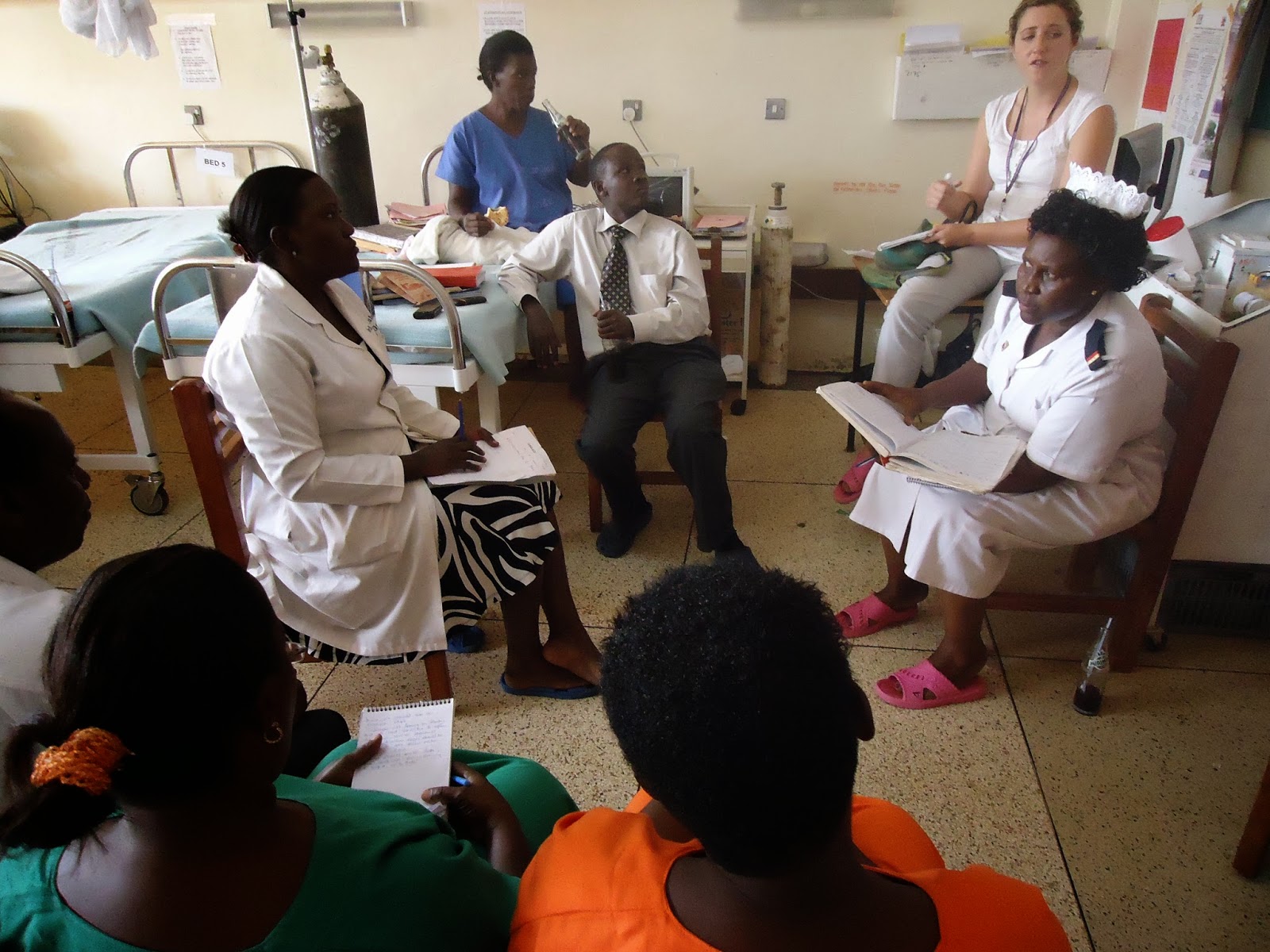Improving health outcomes for women in Uganda
21 November 2014
Sarah Muwanguzi is a Senior Midwife at the Mulago Hospital in Uganda working with the THET funded Liverpool-Mulago Partnership to train health workers and improve health outcomes for patients. As she prepares to visit the UK and speak at THET’s 25th anniversary event in Salford on the 25th November, we asked Sarah to reflect on her experiences of health partnerships, the improvements that have been made in her hospital and the challenges now faced by her team.
It all began when I was deployed as a Deputy Sister in charge of the High Dependency Unit (HDU) in July 2011. My major role was to team up with the then in charge, Prosy Namukwaya, to improve the quality of care for women with critical conditions in the department of Obstetrics and Gynaecology.
Maternal mortality rates in Uganda are very high, at 438 deaths per 100,000 live births, with a still birth rate of 30 deaths per 1,000 total births. Mulago Hospital is a national referral hospital which carries out approximately 70 deliveries per day, with neonatal and maternal mortality rates also very high.
The idea to start a High Dependency Unit (HDU) came up after Dr. Muyingo Mark and Dr. Nakubulwa visited Liverpool Women’s Hospital in the UK with the Liverpool-Mulago Health Partnership. With funding from The Eleanor Bradley Fellowship Trust, the Obstetric HDU Project was initiated in October 2010, with the aim of improving the hospital’s ability to render improved services to the large female population.
We were a group of twelve midwives newly deployed from other wards to work in the HDU and were not conversant in managing critically ill patients. Thus, a training workshop was organized by the UK team, Professor Andrew Weeks and Dr. Sarah Hoyle, to build capacity for all the HDU staff. The knowledge gained from this workshop, plus continuous mentorship and supervision, meant the HDU midwives were able to use their new knowledge and skills to assess and manage acutely ill adults.
I will never forget a woman who was returned from theatre immediately post-surgery. The midwife had not carried out her post-operative observations and had hurried her out of theatre to go off duty. She wheeled her to the HDU and left without handing over to the HDU team. The woman was sitting in a pool of blood, very pale, and with an African Maternal Early Warning Score (AMEWS) of 8. (It is now mandatory for all women admitted in the HDU to be scored and intervention carried out based on the AMEWS score.) UK volunteer, Dr. Emily Lewis, was summoned for help and immediately put up a normal saline 0.9%, which was run very fast and also established a second line to resuscitate for adequate fluids. With that promptness the collapsed woman was revived and returned to theatre for further interventions. She was a near miss!
Learning from Dr. Emily the importance of a good team and promptness in managing emergencies, I was motivated to train, guide, and support the HDU team, and other midwives, to strengthen their knowledge and skills in managing obstetric emergencies. Together with Dr. Jo Sinclair and other UK trainers, we conducted a training workshop at Kansagati HCIV in preparation for the proposed re-opening of the operating theatre, where emphasis was on post-operative observations and infection control measures.
We have also successfully developed a unit culture to review all maternal deaths and near misses (Maternal and Perinatal Death Review, MPDR), so as to generate next steps in improving care. The HDU is now a model ward, where prescribed drugs are administered on time and with good record keeping. The challenge now faced is the high staff turnover due to frequent change over. This calls for more funds and time to conduct more training for newly deployed staff.
.jpg)
.jpg)
Infection prevention project in the Obstetric HDU
My trip to Liverpool in 2012 was very interesting and informative. I saw and admired how things are done differently and greatly desired to bring about a change at my unit. I recalled the situation back home, where there were inappropriate hand hygiene practices carried out by the doctors and midwives while making ward rounds. The unit had many faulty hand washing sinks; we lacked infection control protocols and basic reminders when going in to the main labour ward; the shower rooms were not functional and women went in to labour in a very unhygienic state. Waste disposal methods within the labour ward were inexcusable, with very old broken waste bins, without lids, predisposing new mothers to postpartum infections. The exposure I got while on my exchange visit at Liverpool Women’s Hospital, prompted me to lay down strategies to improve infection control measures at my hospital. Among these was to conduct mandatory trainings in infection control, establish a link system, and to carry out clinical infection control audits for each unit in the department. We managed to conduct a number of trainings and also identified link staffs on all obstetric wards. However, due to limited funding, we were not able to conduct training on clinical audits.
.jpg)
There is generally a new outlook to the entire hospital, which the HDU has painted. There are now alcohol rubbing facilities mounted near entry points for the HDU and labour ward. More thanks to Mulago Hospital’s top management and the Deputy Director, Dr. Birabwa Male, who lobbied for funding to roll out the hand hygiene project to all of the hospital’s wards. Twelve pedal bins were bought and placed within the labour ward and surrounding units, to improve waste management within the labour ward. I’m grateful to the UK volunteers for the contribution they made towards strengthening our midwives capacity to implement simple, routine procedures. I have continued to guide midwives to put into practice what they had learnt from the UK volunteers. Such as triaging in the admission area of the labour ward, newborn resuscitation skills, labour monitoring using a Partograph, infection control measures and using the AMEWS.
You can find out more about the Liverpool-Mulago Partnership here.
If you’d like to attend the event in Salford, you can register for free here.


0 Comments
Leave a comment
Your email address will not be published.